Red Wine Reduction Sauce: Step by Step

A red wine reduction sauce is a tasty and flexible addition to lots of meals. It gives a rich, smooth texture that makes meats and veggies taste even better. You can whip up this sauce by slowly cooking red wine with some aromatics and thickening elements in just a few steps. Once you get the hang of it, this sauce could easily become a go-to in your kitchen since you can tweak it with different ingredients to fit a bunch of dishes.
To start making a red wine reduction sauce, pick out some good ingredients. Grab a nice bottle of red wine along with fresh herbs, minced garlic, and shallots for that delicious base. Cooking down the wine with these extras helps bring out and deepen those flavors, leading to a rich and tasty sauce. With a bit of patience, you can create a homemade red wine reduction that really impresses on your dinner table.
Choosing the Right Ingredients
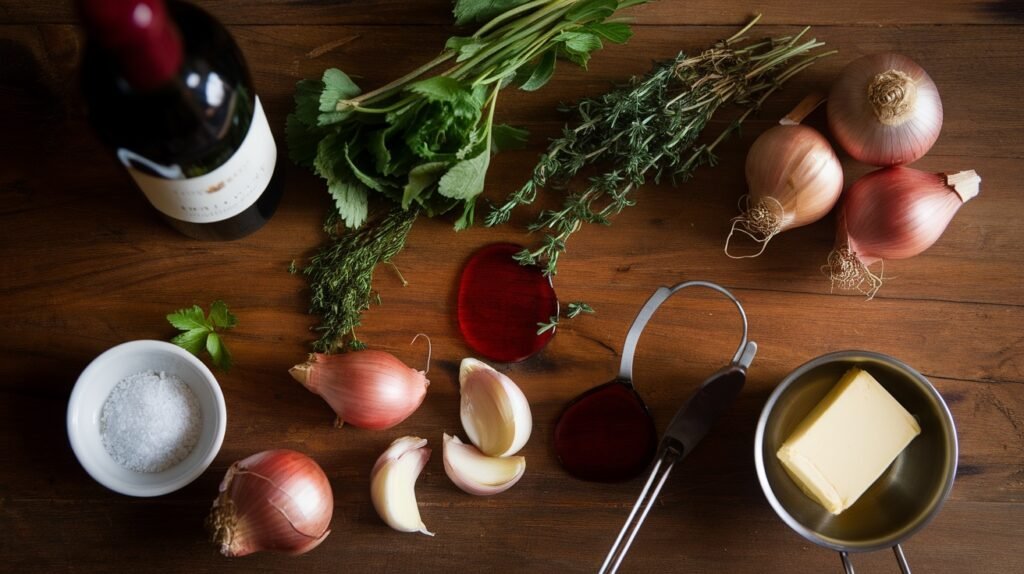
When it comes to making your red wine reduction sauce, picking the right stuff is key to making sure your sauce enhances your meal. Let’s look at some tips to help you choose the right red wine, main ingredient, and other add-ins for that perfect sauce.
Picking the Red Wine
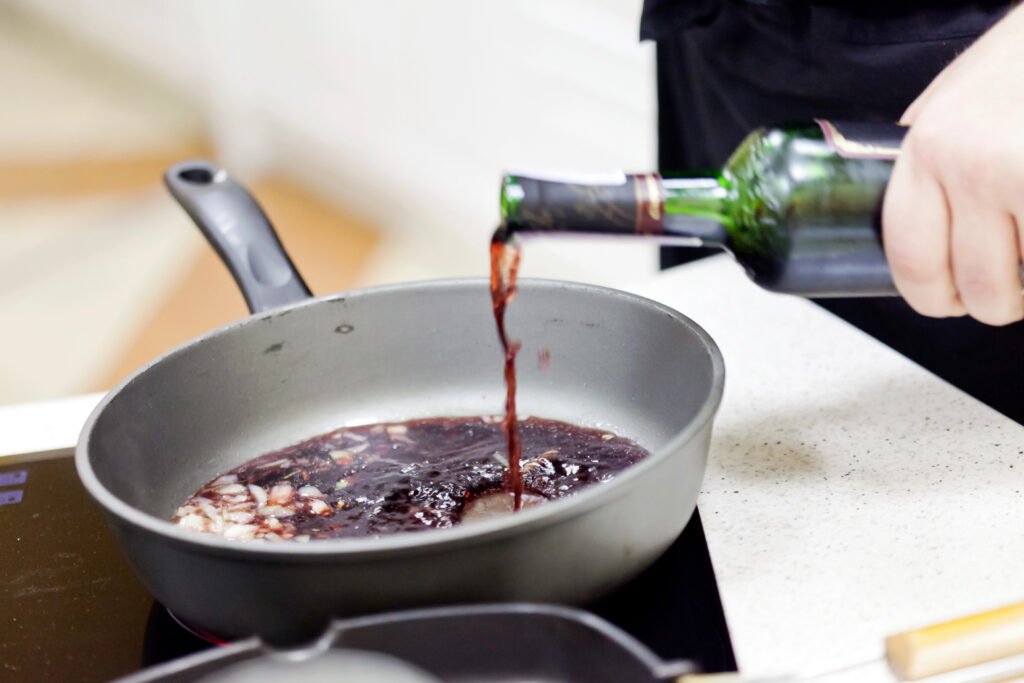
You want a good red wine for a balanced and flavorful sauce. Look for a medium to full-bodied type like Cabernet Sauvignon, Merlot, or Pinot Noir. Keep in mind that the wine’s flavors will get stronger as it cooks down, so go for a wine you enjoy drinking. Skip the super sweet dessert wines since they might make your sauce too sugary for most dishes.
Selecting the Base Ingredient
The base ingredient is usually the first one you add to the pan and sets the stage for your sauce. Common picks are olive oil or butter, which you use to sauté those aromatic ingredients like shallots or onions. Whether to use olive oil or butter depends on your taste and what you’re making. Olive oil gives a lighter, fruitier flavor while butter brings a rich, creamy vibe.
Adding Aromatics and Flavorings
Bringing in aromatics and flavoring can really boost the taste of your red wine reduction sauce. Here are some great additions:
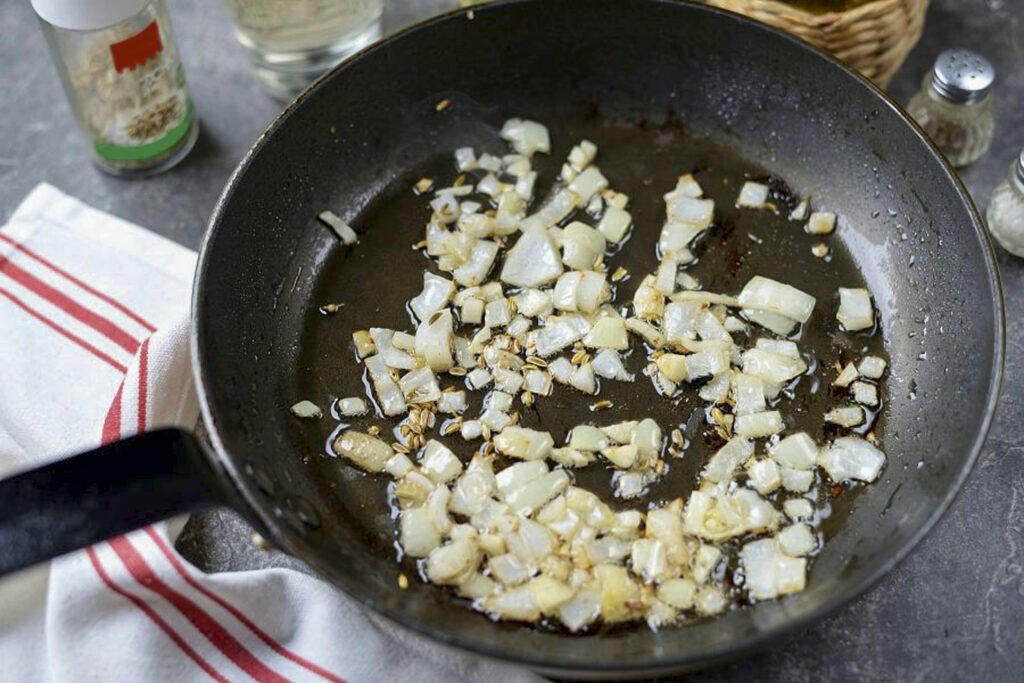
- Shallots or onions: Finely chopped shallots or onions provide a nice savory base. Sauté them in your choice of base until they’re soft and golden.
- Garlic: Adding minced garlic gives your sauce a bold kick that works well with many dishes.
- Herbs: Fresh herbs like rosemary, thyme, or basil can add their distinct flavors and aromas. Toss in a sprig of your favorite herb while the sauce cooks down.
- Broth: Throwing in some beef or chicken broth gives your sauce another layer of flavor and makes it smoother. A quality broth goes a long way, or you can whip up your own for the best results.
Don’t forget to taste and season your sauce with salt and pepper to hit that flavor sweet spot. Feel free to experiment and find combinations that work just right for your dish.
Getting Ready to Cook
Before you dive into cooking your red wine reduction sauce, it’s smart to have all your ingredients prepped and measured. This part is all about making sure you have everything cut up and ready so the cooking part goes smoothly.
Measuring the Red Wine
Choose a nice red wine for your sauce. An Old World wine will give a more earthy flavor while a New World wine adds a fruity twist. Measure out 3/4 cup of red wine with a measuring cup. Getting this right is important since it impacts the sauce’s flavor and thickness.
Chopping the Aromatics
For this sauce, you’ll want finely chopped shallots or onions, plus minced garlic. Shallots offer a milder taste than onions, so pick whichever you prefer. Start by peeling and finely chopping one medium shallot or onion. Make sure the pieces are small since big chunks can mess with the sauce’s texture.
Next, mince a clove of garlic. Flip the garlic, peel it, and then chop it into tiny pieces. If you have a garlic press, that’s a great way to get them nice and uniform.
Having everything prepped will make cooking a lot easier, letting you focus on making a delicious red wine reduction.
🍷✨ Cooking the Sauce: Step by Step
- Sauté aromatics:
In a saucepan over medium heat, melt 1 tablespoon of butter. Add 1 finely chopped shallot and 1 minced garlic clove. Sauté until softened, about 2–3 minutes. - Deglaze with wine:
Pour in 1 cup of good-quality red wine (like Cabernet or Merlot), stirring to scrape up any bits from the pan. - Add flavor:
Add a few sprigs of fresh thyme, rosemary, and a pinch of black pepper. (Optional: add a splash of beef or vegetable broth for extra richness.) - Simmer and reduce:
Let the mixture simmer gently (not boil) until it reduces by about half and thickens slightly, around 10–15 minutes. - Finish:
Remove the herbs. Whisk in 1–2 tablespoons of cold butter off the heat for a silky finish. Season with salt to taste. - Serve:
Drizzle over steak, lamb, roasted veggies, or anything that needs a rich, elegant boost!
Serving Ideas
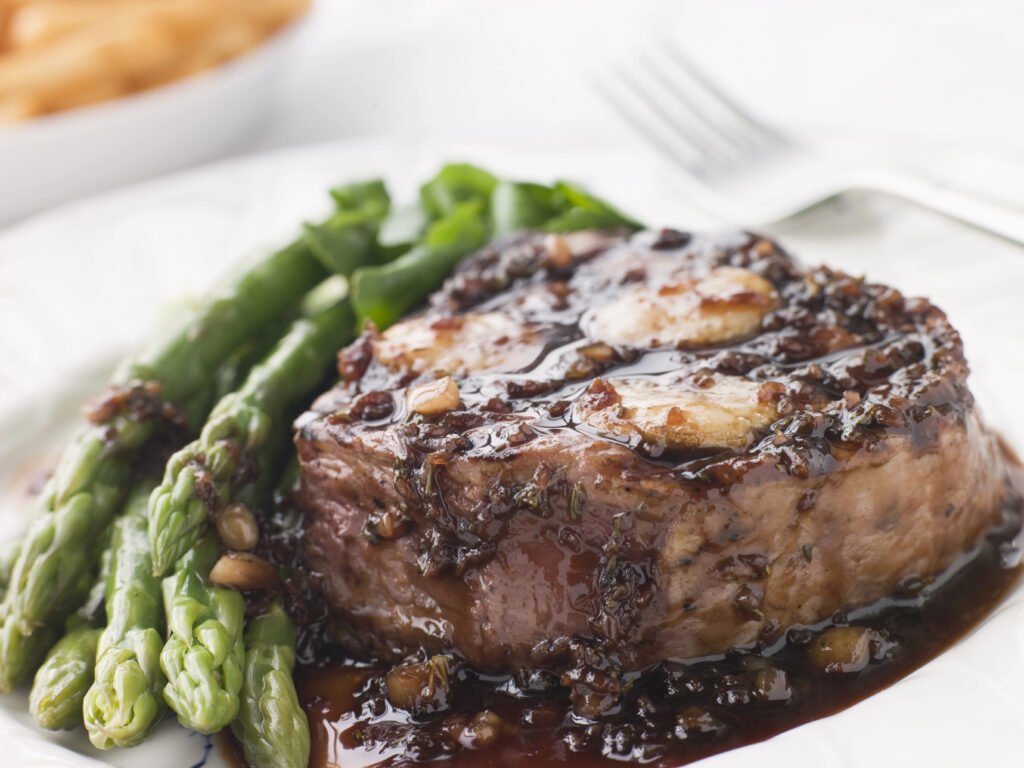
Best Dishes to Pair With
A red wine reduction sauce can really take many meals up a notch. It goes especially well with meats like beef and lamb. Picture drizzling this sauce over a nice steak or a juicy rack of lamb. It also complements poultry like roasted duck or turkey wonderfully.
And don’t forget veggies! This sauce pairs nicely with hearty vegetables like mushrooms or artichokes, and even pasta dishes, adding another level to their flavor.
Serving Temperature
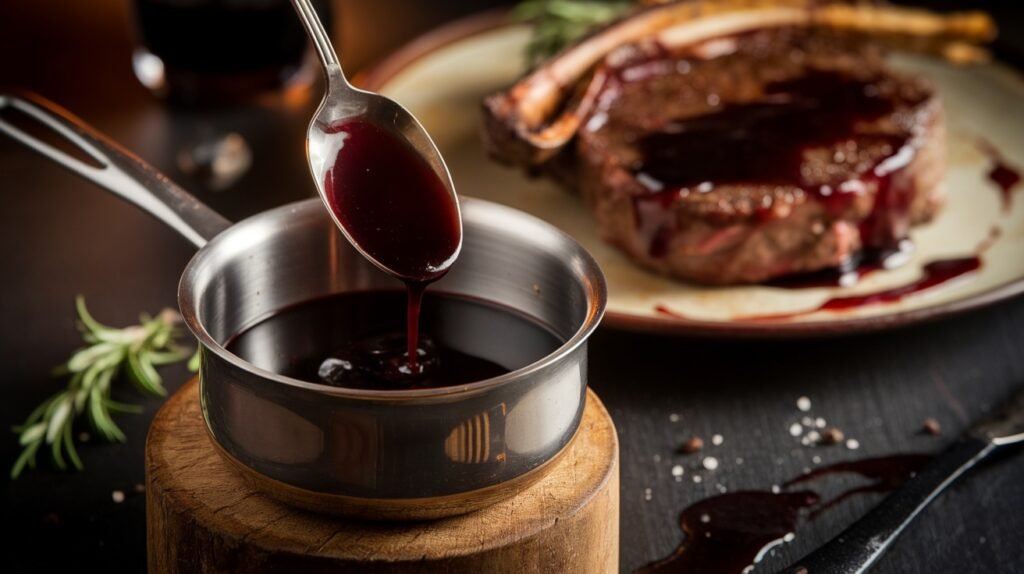
Serving temperature matters to get the best flavors from your red wine reduction sauce. It should be warm or just above room temp. When heated right, the sauce should be syrupy, which enhances its rich taste and makes it a great match for all kinds of meals.
To heat it, you can gently warm the sauce on low heat, stirring often so it doesn’t burn. Alternatively, you can pop it in the microwave for short bursts, stirring in between to keep things even. Just be careful not to overheat it since that can mess with its consistency and flavor.
Frequently Asked Questions
What’s the Best Type of Red Wine?
The kind of red wine you use can change the flavor of the sauce a lot. Some folks say go for an Old World wine for an earthier taste, while others suggest a New World wine for a fruiter vibe. In the end, pick a wine you like to drink because the flavor will really come through in the sauce.
What Dishes Work Well With This Sauce?
Red wine reduction sauce fits into many meals beautifully. It shines with red meats like steak, lamb, and venison. Grilled or roasted veggies too, like mushrooms or potatoes, get a boost from this sauce. When serving with poultry like chicken or duck, just make sure it’s a robust dish that can handle the sauce’s strong flavors.
How Can I Thicken the Sauce?
Thickening your red wine reduction sauce typically happens during the cooking as it simmers down. If it’s still not thick enough, you could add butter or flour. You can also try other thickeners like cornstarch if that’s more your style.
How Long to Reduce the Wine For?
How long you need to reduce the wine depends on how much you’re using, your pan type, and how high the heat is. Usually, it takes about 15 to 30 minutes to reach the right thickness. Keep an eye on it to avoid overcooking.
Do I Have to Add Stock?
You don’t have to add stock, but popping in some chicken, beef, or vegetable stock can really amp up the sauce’s flavor. Choose based on what you’re making and your own taste. Just keep in mind to adjust your seasoning if your stock is salty.
Should I Use Any Specific Spices or Herbs?
Classic spices and herbs for a red wine reduction sauce include garlic, shallots, thyme, rosemary, and pepper. But you can definitely play around with other ingredients to make the sauce your own. Some recipes might even add things like balsamic vinegar, Dijon mustard, or a little sugar to mix things up.







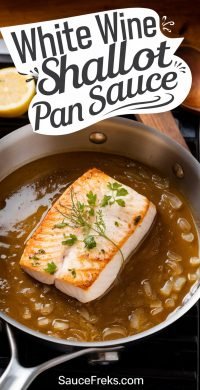




Add comment